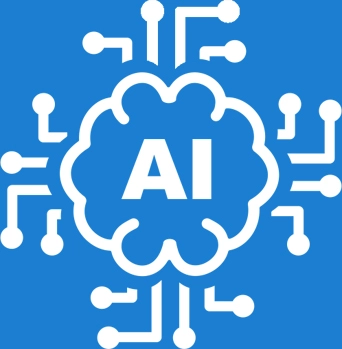


In this tutorial, we are going to discuss the types of AI or an artificial intelligence which means how artificial intelligence is categorized. As we know, AI is defined as the machine's ability to analyze data and make decisions, or the ability to think and act like a human in a new situation.
So we can divide the AI broadly into two categories, firstly, based on the ability of an AI machine how much it can do in a situation, which means analyzing and making decisions according to the data.
For example, AI that is used in a Self-driving car has only a narrow AI which means it can act perfectly for a specific purpose without needing common sense or general background knowledge. In the higher ability needed cases, the AI machine must have much more common sense and background data, etc for taking decisions, so we are categorizing based on the ability.
Next broad classification of AI id based on the functionalities. We already discussed that AI is used for various purposes starting from a simple mobile game to even in military real-time situations. So we have to divide the AI machines based on their functionalities.
For example, in the basic case of an automatic responder, we need only a simple AI machine. Take the case of mobile games, it needs only a limited amount of memory and processing like that we are dividing AI based on functionalities.
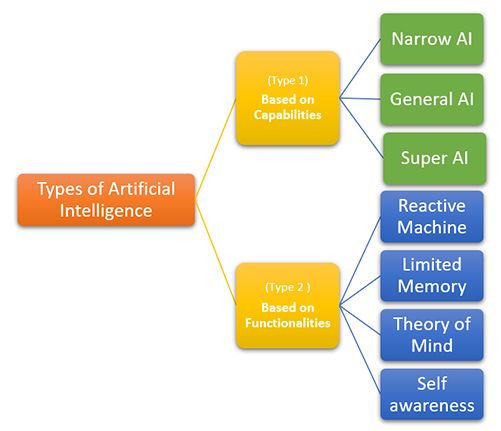
We are discussing more than classification in detail in the below sections.
According to the capability-based classification, there are three types of AI or AI-based machines
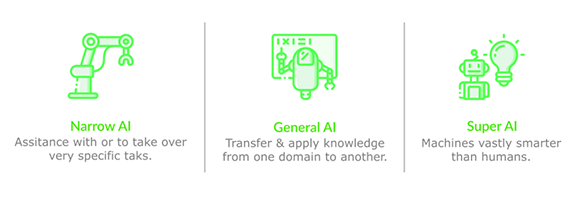
Narrow AI or Weak AI is an Artificial Intelligence technology that enables a high-functioning system that reproduces or perhaps exceeds human intelligence for a dedicated purpose. Narrow AI is designed to perform a specific task or they are goal-oriented or is limited to a specific or narrow area. Narrow Intelligent systems only have specific intelligence. All forms of modern AI can be classified as weak/Narrow AI.
| ADVANTAGES | DISADVANTAGES |
|---|---|
|
|
Artificial General Intelligence or strong AI is a system that can perform the particular task that they are designed for or the particular function assigned to them with greater efficiency than humans can, while they are a big zero to do any task which is not assigned to them. AGI machines are designed to solve problems like humans with general intelligence. The characteristics that AGI should have are :
The AI system can’t be achieved AGI now, theoretically replication human brain using an algorithm is possible. Artificial Intelligence will take a long time to reach the Artificial General Intelligence stage. However, the transition has begun.
| ADVANTAGES | DISADVANTAGES |
|---|---|
|
|
The software-based system holds intellectual powers beyond those of humans. It is the imaginary AI that not only interprets human behavior but is where machines will become self-aware enough to surpass the capacity of human intelligence and behavioral ability. With Superintelligence, machines can think of possible abstractions which are simply impossible for humans to think of. ASI would be exceedingly far-far better at everything or whatever we do ASI would have a greater memory with a faster ability to process and analyze.
| ADVANTAGES | DISADVANTAGES |
|---|---|
|
|
| Narrow AI | General AI |
|---|---|
|
|
According to the functionality based classification, there are four types of AI or AI-based machines:
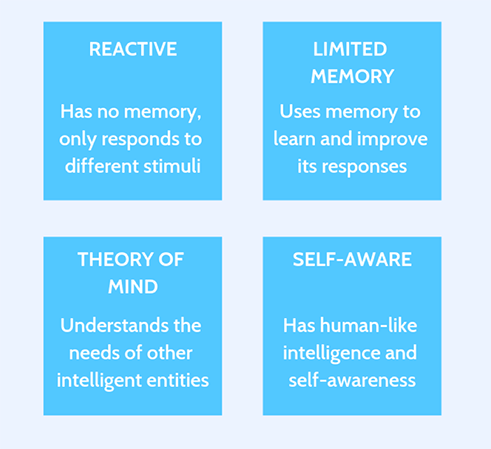
Reactive machines are the basic type of AI. This type of machine can’t store memories or use any experience to determine future actions. Reactive machines can only perceive the present situation and react to the respective. They are not meant to learn. Reactive Machines are with extremely limited capacity. This type of machine can only be used to perform an automatic response to a limited set of inputs. Reactive Machines cannot refer to any of their past experiences, and cannot improve their own with practice. IBM’s Deep Blue is an example of a reactive machine type that won the first computer chess championship in 1997, defeating the grandmaster Garry Kasparov.
| ADVANTAGES | DISADVANTAGES |
|---|---|
|
|
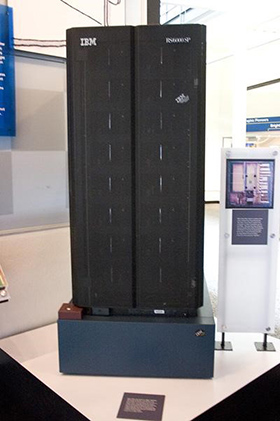
Limited Memory machines can retain data for a limited period. The retained data cannot be added to a library of their experiences, only can use this data for a specific period. As distinct from reactive memory types, Limited Memory consists of machine learning models that extract information from previously learned information, facts, events, or limited Memory type machines can learn by analyzing the data given to them. These types are used by virtual voice assistants, chatbots, self-driving cars, and several other technologies.
Self-driving cars, use limited memory technology, depend on a combination of integrated and observationally gathered knowledge. Their ability to drive comes from analyzing their environment, detecting patterns in external factors, and adapting as required. Self-driving cars gather information from the movement of other traffic participants present in their line of sight. The software analyses the data and decides on the speed and the direction of the vehicle. After the implementation of limited memory, the response time on machines has decreased to a great extent.
| ADVANTAGES | DISADVANTAGES |
|---|---|
|
|
AI Machines with the human ability to represent the mental states of others, including their belief, desires, and intentions are the Theory of Mind type machines. This type of AI is still hope, but researchers are making a lot of efforts to develop such AI machines. For integrating AI into human society, the same capability of inferring human mental states is a prerequisite. During the last several years, the theory of mind is fueled by deep learning. Theory of Mind aims to span across the field of artificial intelligence, cognitive science, and neuroscience. The major areas of the human brain that are involved in the theory of mind are revealed by neuroscientific investigators. A computer with a ‘mind’ does not exist yet.

| ADVANTAGES | DISADVANTAGES |
|---|---|
|
|
Self-Aware AI is believed as the ultimate goal of AI development. This type of machine raises the question of whether a machine can become truly self-aware, or ‘conscious’, and is best left for philosophers. Self-Aware AI machines will be super intelligent with their consciousness, sentiments, and self-awareness. This will be smarter than the human mind. Self-Awareness of AI is remaining as a hypothetical concept.
| ADVANTAGES | DISADVANTAGES |
|---|---|
|
|